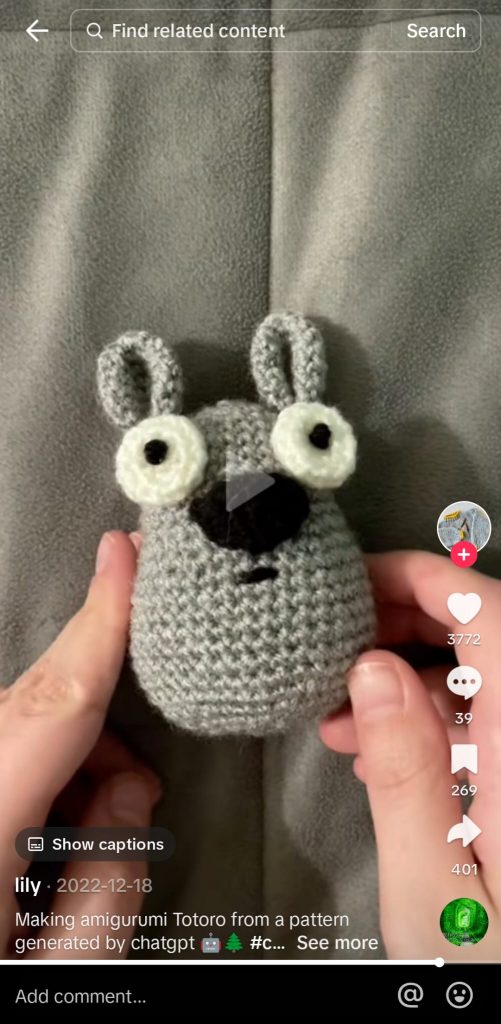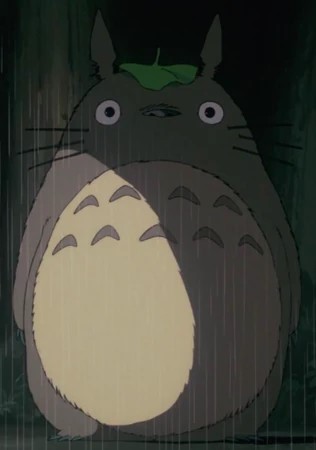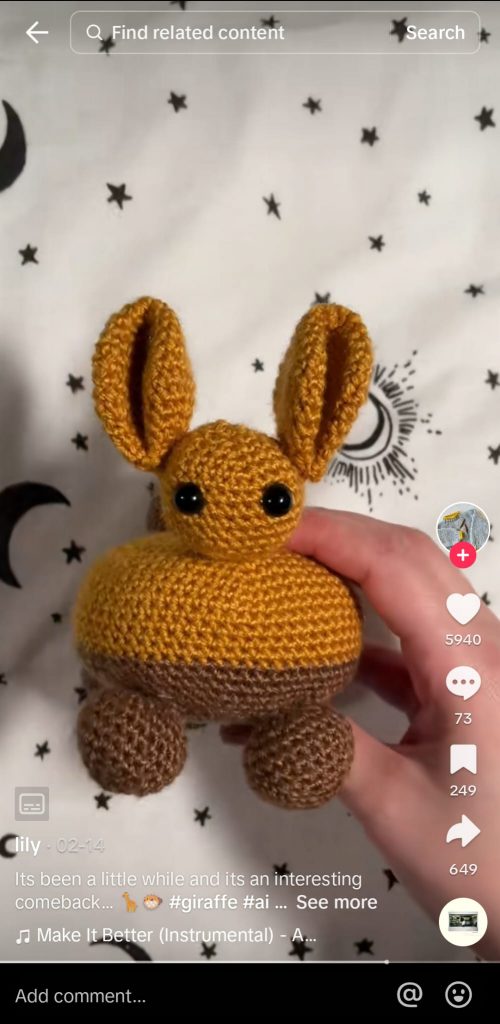I always look forward to that time of the day when I can be in my kitchen and cook a meal. This activity acts as a creative release and helps me get rid of the day’s stress and anxiety. I enjoy watching cooking videos with recipes from all over the world to learn about other cultures and get inspiration for my next meal. Therefore, when I am faced with an almost empty fridge and a tight budget, I use this opportunity to apply the knowledge and library of recipes that I gathered throughout the years.
However, since I moved abroad, I met many students that hate the fact that they need to cook three meals a day for themselves. In most cases, they either choose to buy easy-to-prepare dishes (which can become costly very fast) or rely on pasta and pesto. Most of them told me that they don’t enjoy planning meals, but if they were given precise instructions and grocery lists, they might start cooking more.
Therefore, I decided that I would experiment with AI recipes generators to see if they might help students eat better. I used ChefGPT to generate a meal with the ingredients that I had in my fridge. The interface is easy to use and I like the fact that you can choose the kitchen tools that you have at home, as many students do not have fully equipped kitchens.
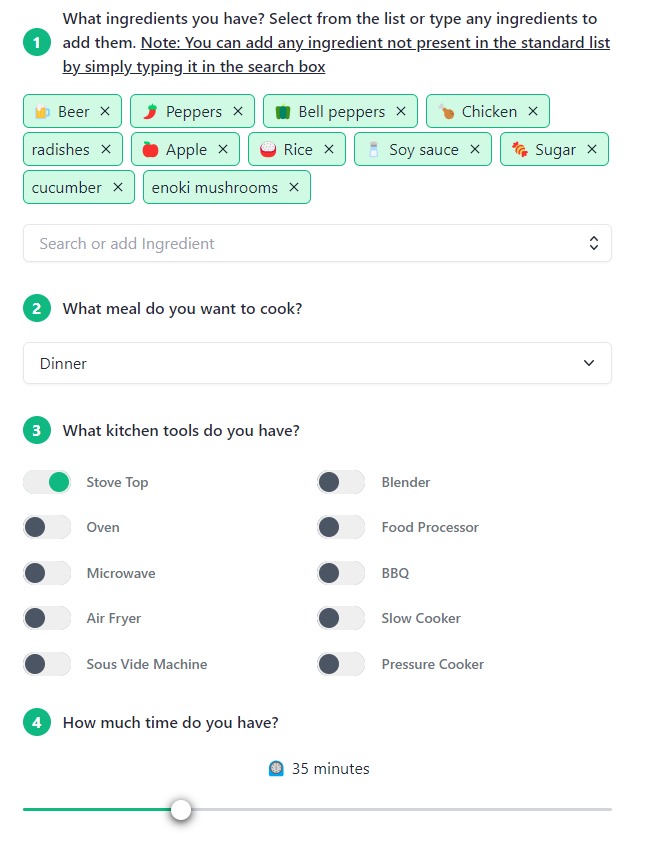
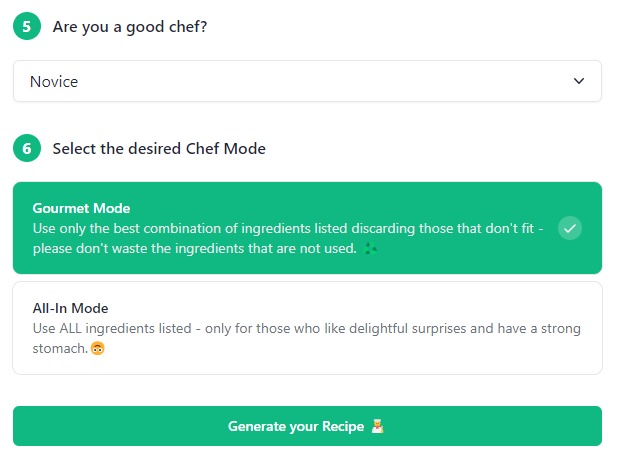


At a quick glance, I find the combination of ingredients a little interesting, especially because I told ChefGPT to give me a recipe that best mixes all the ingredients, without including everything. However, when searching on Google, it shows that these ingredients do work together well and help create nutritious meals.
Another aspect that I like about the recipe from ChefGPT is that it includes the macros for the recipe, as I know many students that pay attention to their nutrition (however, I am not an expert so I cannot assess if the AI generator is correct).
I believe that tools such as this one can be used when shopping for grocery. For example, one could go to the store, check which products are on sale that day, input the ingredients in the app and check the variety of meals that it can create. This might be a very interesting experiment and a great way to save money and reduce food waste.
Overall, I believe that AI generating tools can help people struggling with culinary creativity to create a variety of nutritious meals without throwing away unused ingredients. However, the program’s outputs should be taken with a grain of salt as sometimes recipes might sound better than they are in real-life practice.
